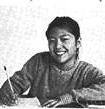Kelly Christopher, a student at Lutheran High School in California, US, loves oranges. One day last week, she used a pole(竿子) to pick oranges off trees and co-八年级英语
题文
| Kelly Christopher, a student at Lutheran High School in California, US, loves oranges. One day last week, she used a pole(竿子) to pick oranges off trees and collect them in baskets. It’s the first time in her 15 years she’s picked fruit from trees. "This is quite different from buying oranges in the supermarket," said Christopher. "Every time I eat an orange, I’ll remember this experience." Christopher was one of the 30 student volunteers at Soil Born Farms. She volunteered as part of a project which was set up in 2009 to help homeowners in South Land Park pick oranges and other fruits out of their backyards. Before, the fruit would rot on the ground or get eaten by animals. Now the fruit is donated to those who need it. "It is good for many people", said Randy Stannard, who works for the project. "The homeowner gets fruit picked and more people can have healthy food." "Two harvests (收成 ) were organized in 2009 and volunteers picked 3,000 pounds (1,360kg) of fruit", Stannard said. In 2010, the number was 20,000. This year, Soil Born Farms hopes to get 40,000 pounds. They will harvest every weekend from January to April. Shannon Galloway, Christopher’s science teacher, brought her students into the project this year. "You’re making use of a resource that might be wasted," she said. "I think it’s meaningful to everyone." Donato Frazier, 15, always climbs up a ladder(梯子) and gets on the top of the tree. "Standing on the treetop is pretty cool," Frazier said. "I can see clearly that many baskets are filled up, and even see that many people are eating healthy fruit because of our volunteer work." 71. Christopher and other students went to pick fruits from real trees because they wanted to _____. A. have some fresh fruit for themselves B. make some money by selling fruit C. provide people with more healthy fruit D. buy some cheap fruit from their neighbors 小题1: When was the project set up?
|
答案
| 小题1:C小题1:B小题1:A小题1:A小题1:C |
| 1.细节理解题。从第三段和第四段可知学生们帮助摘水果是为了更多的人能吃上健康的水果。所以选C。 2.细节理解题。从第三段第二句She volunteered as part of a project which was set up in 2009 to help homeowners in South Land Park pick oranges and other fruits out of their backyards.可知选B。 3.细节理解题。从第三段第二句和第三句She volunteered as part of a project which was set up in 2009 to help homeowners in South Land Park pick oranges and other fruits out of their backyards. Before, the fruit would rot on the ground or get eaten by animals.可知选A。 4.推理判断题。从第六段和第七段可知老师带学生帮助摘水果是利用学生这一资源,所以A符合题意。 5.推理判断题。从文中学生以及老师的话可知他们认为这项活动既能帮助别人,很有意义,又很有意思。所以选C。 |
据专家权威分析,试题“Kelly Christopher, a student at Lutheran High School in Cali..”主要考查你对 人物传记类阅读,故事类阅读 等考点的理解。关于这些考点的“档案”如下:
人物传记类阅读故事类阅读
考点名称:人物传记类阅读
- 人物传记类阅读:
本类型选材主要是名人轶事。
人物传记的叙述线索也常常以时间为序。内容一般不是一个人的生活流水账,而是选取主人公一些重要的人生阶段或生活片段来展开叙述。
阅读时要把握主人公在此阶段发生的事对他本身或他人有什么重要的意义和影响。
考点名称:故事类阅读
故事类阅读:
文章一般描述的是某一件具体事情的发生发展或结局,有人物、时间、地点和事件。
命题往往从故事的情节、人物或事件的之间的关系、作者的态度及意图、故事前因和后果的推测等方面着手,考查学生对细节的辨认能力以及推理判断能力。
阅读这类材料时,同学们一定要根据主要情节掌握文章主旨大意,同时抓住每一个细节,设身处地根据文章内容揣摩作者的态度和意图,根据情节展开想象,即使是碰到深层理解题也可迎刃而解。- 故事类阅读注意:
初中生接触到的阅读材料大都是故事类。
阅读故事类的材料,应该抓住人物线索、地点线索、时间线索和情节发展线索。
特别注意的是,以上线索往往是并存的。因为情节的发展总是涉及到人物的变化、时间的推移、场景的变换等。
而阅读材料后的阅读理解往往会围绕这些内容设计一些事实类的理解题。
凡事实类的理解题都可以从阅读材料的表层文字中找到答案。
在阅读故事类短文时,应理解文章的深层含义,也就是它的主题。在此需要注意的是,现在的阅读理解题在测试事实类的理解题的同时,往往有一道推理类理解测试题.
- 最新内容
- 相关内容
- 网友推荐
- 图文推荐
上一篇:完形填空(每小题1分,共10分)根据短文内容,在短文后面的四个选项中选择一个可以填入相应空格内的正确答案,并把答题卡上对应题目的正确答案标号涂黑。Once there was a ric-八年级英语
下一篇:Are you a crazy chocolate fan? Have you heard about Hershey’s Kisses? Do you love the movie Charlie and the Chocolate Factory? If your answer was, "yes", t-八年级英语
零零教育社区:论坛热帖子
| [家长教育] 孩子为什么会和父母感情疏离? (2019-07-14) |
| [教师分享] 给远方姐姐的一封信 (2018-11-07) |
| [教师分享] 伸缩门 (2018-11-07) |
| [教师分享] 回家乡 (2018-11-07) |
| [教师分享] 是风味也是人间 (2018-11-07) |
| [教师分享] 一句格言的启示 (2018-11-07) |
| [教师分享] 无规矩不成方圆 (2018-11-07) |
| [教师分享] 第十届全国教育名家论坛有感(二) (2018-11-07) |
| [教师分享] 贪玩的小狗 (2018-11-07) |
| [教师分享] 未命名文章 (2018-11-07) |






